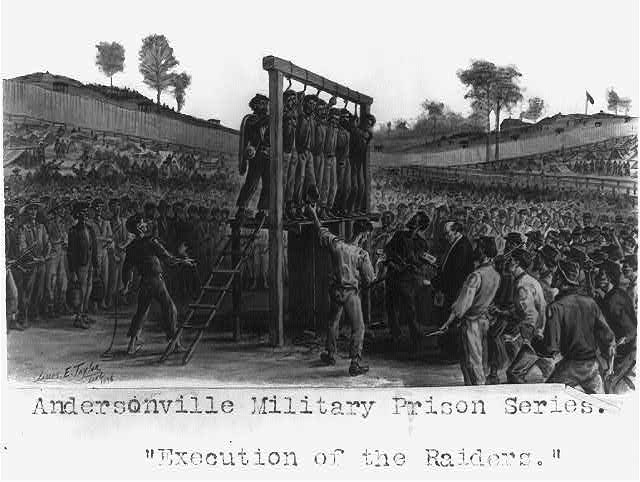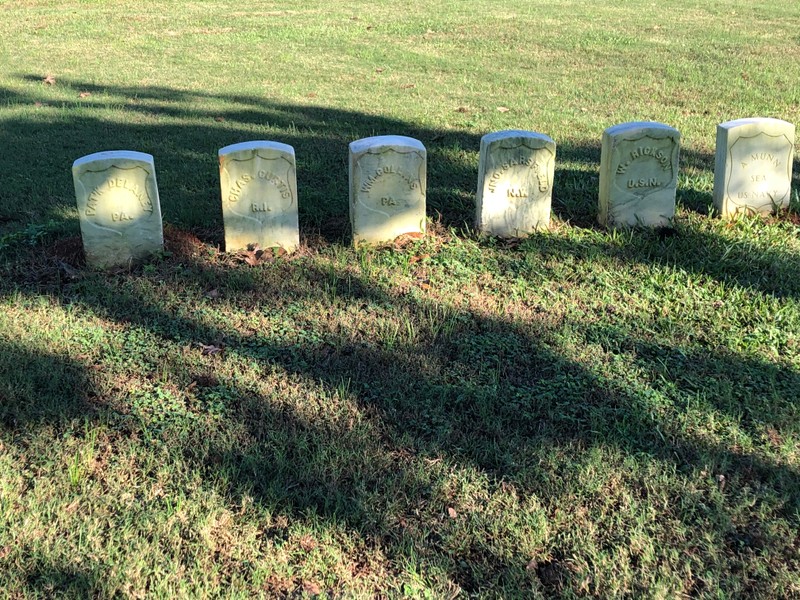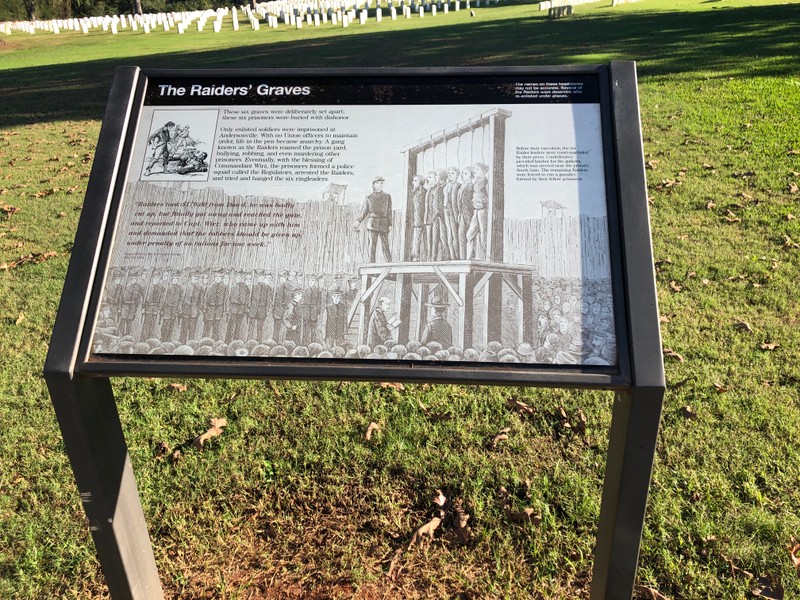Raiders' Graves
Introduction
Text-to-speech Audio
Images
"Execution of the Raiders"

Raiders' Graves separate from other prisoners
.jpg)
Raiders' Graves

NPS Signage on Raiders

Backstory and Context
Author-Uploaded Audio
Georgia Public Broadcasting, "How Rogue Soldiers at Andersonville Prison Terrorized Fellow Prisoners." February 28, 2019. GPB Education. Accessed December 20, 2020. https://youtu.be/UjZ1mBiTOGw
Text-to-speech Audio
As Camp Sumter Military Prison began to rapidly overrun the capacity of the stockade, violence among prisoners also increased. Sometimes called “camp-robbers” or “marauders”, prisoners who stole or assaulted fellow inmates operated both individually and in groups. These men were later identified as the Raiders and rumors swirled of Raider acts of atrocity even including murder of fellow prisoners.[1] Without law or regulation imposed by the Confederate guards, Raider activity continued to run rampant inside the compound. William Tyler remembered the group, writing:
“About this time there was a band formed, probably the off-scourings of the city of New York…They made up their minds to live, even if the rest all died of starvation. They were armed with clubs, and would take the mush away from the weaker ones…We were unable to stand by and permit such outrages, for to a man who lost one ration there, it meant almost certain death.”[2]
This notorious group demonstrated the need for law and order within the prison. Most accounts of the Raiders describe the group as led by soldiers from New York, such as John Sarsfield of the 144th New York.[3] The Raiders were stronger because they stole rations from other prisoners, making it even easier to overpower new soldiers arriving in the camp. Stealing gave them better weapons which were used to sometimes kill other prisoners.[4] Stories abound in prison memoirs of scuffles, skirmishes and wrestling matches between ordinary prisoners and the Raiders over small goods like blankets or watches. John McElroy described a confrontation in which two hundred prisoners marched against the Raiders to reclaim a watch belonging to a Dan Martin of the Eighth New York Infantry. The prisoners lost this fight and only increased the boldness of the Raiders who inaugurated a “reign of terror” over the camp.[5] Eventually, the other prisoners in the camp retaliated out of fear and frustration, grabbing the attention of commander Captain Wirz and resulting in the hanging of six Raider leaders. The separate burial designates the Raiders as detested and scorned in the memory of Andersonville Prison.
Sources
[1] “The Raiders,” Andersonville National Historic Site, National Park Service, 2020. Accessed December 16, 2020. https://www.nps.gov/ande/learn/historyculture/the_raiders.htm
[2] William N. Tyler, The Dispatch Carrier and Memoirs of Andersonville Prison (Port Byron, Ill.: Port Byron “Globe” Print, 1892), part 2, 30. Project Gutenberg, accessed December 16, 2020. http://www.gutenberg.org/files/40046/40046-h/40046-h.htm#Page_a9
[3] Ovid Futch, “Andersonville Raiders,” Civil War History 2, no. 4 (December 1956): 49.
[4] Futch, “Andersonville Raiders,” 53.
[5] John McElroy, Andersonville: A Story of Rebel Military Prisons, edited by Robert McCune (Digital Scanning Incorporated, 1999), 150. ProQuest Ebook Central, accessed December 16, 2020. https://ebookcentral.proquest.com/lib/uncc-ebooks/detail.action?docID=3151955.
c. 1898, Andersonville Military Prison Series. Library of Congress Prints and Photographs Division, Washington D.C. http://hdl.loc.gov/loc.pnp/pp.print
Personal Photograph, Erin Del Giudice Nov. 14, 2020
personal Photograph Erin Del Giudice, Nov. 14, 2020
Personal Photograph, Erin Del Giudice, Nov. 14, 2020
